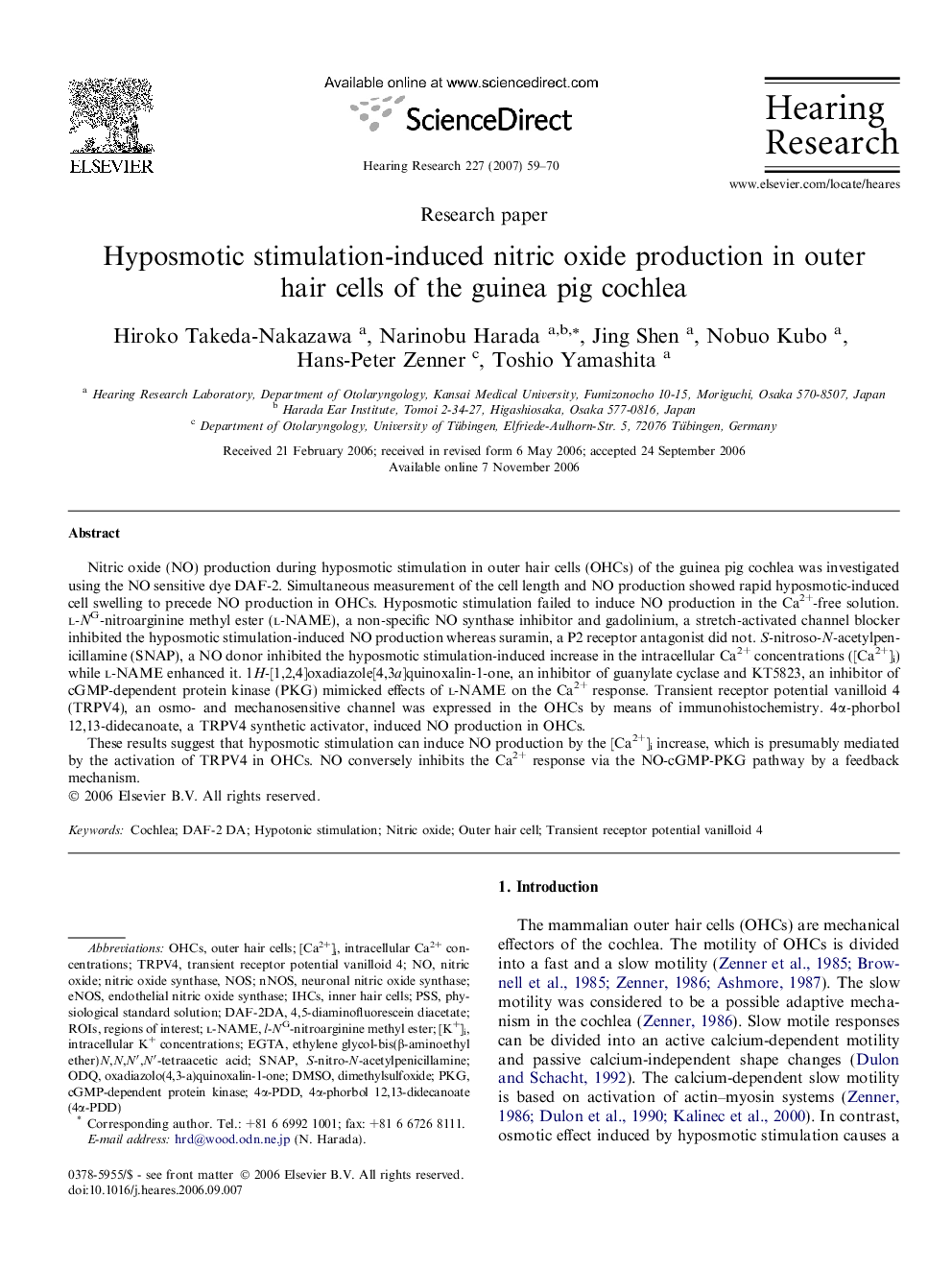| Article ID | Journal | Published Year | Pages | File Type |
|---|---|---|---|---|
| 4356290 | Hearing Research | 2007 | 12 Pages |
Nitric oxide (NO) production during hyposmotic stimulation in outer hair cells (OHCs) of the guinea pig cochlea was investigated using the NO sensitive dye DAF-2. Simultaneous measurement of the cell length and NO production showed rapid hyposmotic-induced cell swelling to precede NO production in OHCs. Hyposmotic stimulation failed to induce NO production in the Ca2+-free solution. l-NG-nitroarginine methyl ester (l-NAME), a non-specific NO synthase inhibitor and gadolinium, a stretch-activated channel blocker inhibited the hyposmotic stimulation-induced NO production whereas suramin, a P2 receptor antagonist did not. S-nitroso-N-acetylpenicillamine (SNAP), a NO donor inhibited the hyposmotic stimulation-induced increase in the intracellular Ca2+ concentrations ([Ca2+]i) while l-NAME enhanced it. 1H-[1,2,4]oxadiazole[4,3a]quinoxalin-1-one, an inhibitor of guanylate cyclase and KT5823, an inhibitor of cGMP-dependent protein kinase (PKG) mimicked effects of l-NAME on the Ca2+ response. Transient receptor potential vanilloid 4 (TRPV4), an osmo- and mechanosensitive channel was expressed in the OHCs by means of immunohistochemistry. 4α-phorbol 12,13-didecanoate, a TRPV4 synthetic activator, induced NO production in OHCs.These results suggest that hyposmotic stimulation can induce NO production by the [Ca2+]i increase, which is presumably mediated by the activation of TRPV4 in OHCs. NO conversely inhibits the Ca2+ response via the NO-cGMP-PKG pathway by a feedback mechanism.
